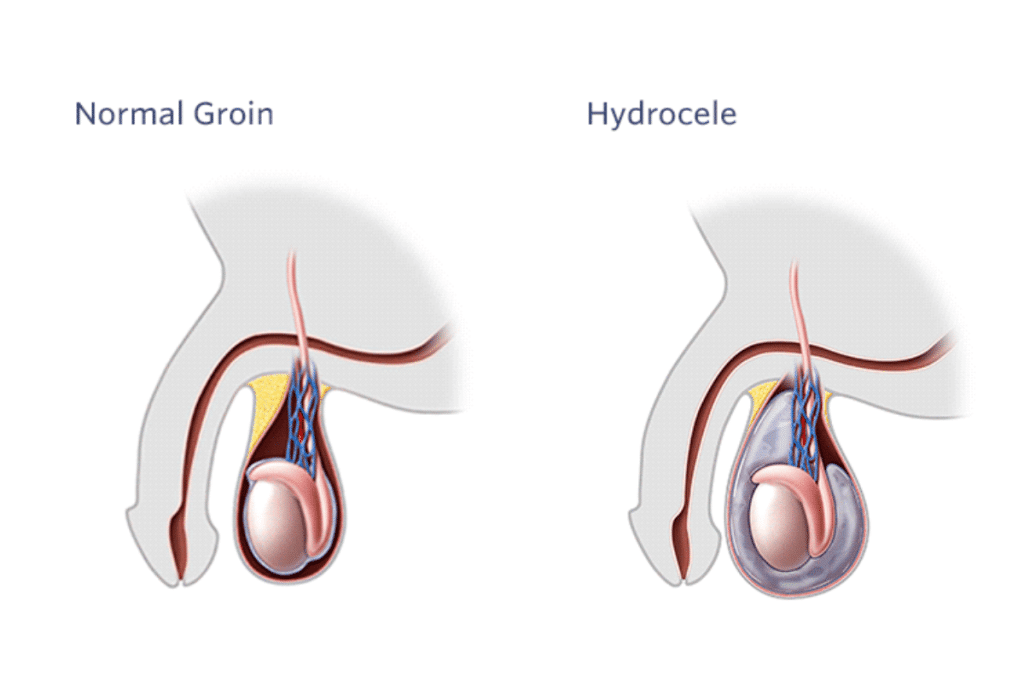A hydrocele (HI-droe-seel) is a type of swelling in the scrotum, the pouch of skin that holds the testicles. This swelling happens when fluid collects in the thin sac that surrounds a testicle. Hydroceles are common in newborns. They often go away without treatment by age 1. Older children and adults can get a hydrocele due to an injury within the scrotum or other health problems.
A hydrocele often isn’t painful or harmful. It might not need any treatment. But it’s important to see a Surgeon if the scrotum looks swollen.
Complications:
A hydrocele often isn’t dangerous and usually doesn’t affect the ability to have a baby. But a hydrocele might be linked with a health problem that can cause serious issues. These problems include:
Infection or tumor: Either might cause the testicles to make less sperm or not work as well as usual.
Inguinal hernia: This can lead to life-threatening health problems.
Although hydroceles tend to be fairly harmless in most patients, the condition can present differently depending on how it develops in the body. The two most common forms are known as noncommunicating and communicating hydroceles.
For noncommunicating hydroceles, the size usually stays the same or grows very slowly.
Communicating hydrocele, there’s the potential for other conditions to also develop. For example, with a communicating hydrocele, the sac doesn’t fully close. In most cases, this means that fluid can travel in and out of the sac. But depending on the size of the remaining opening, it’s possible for a hernia to also develop.
Hydrocele vs. varicocele
Both hydroceles and varicoceles are conditions that cause testicular lumps or swelling. However the location and cause of the swelling for both conditions are different.
A hydrocele is not an inguinal hernia. But depending on the type of hydrocele that’s present, the likelihood of an inguinal hernia forming is possible. In a communicable hydrocele where the remaining opening to the sac is large enough, pressure can push the intestines into the opening, causing a bulge.
Epididymal cysts form when fluid collects in the epididymis, a coiled tube that sits behind the testicles.
Hydroceles and hematoceles are similar conditions but with a specific difference. While hydroceles are fluid-filled sacs, hematoceles are sacs filled with blood.
A hematocele is usually associated with trauma or injury.
Pyocele a purulent collection of fluid surrounding the testicle in the potential space of the tunica vaginalis

For comprehensive treatment for Hydrocele, hematocele, or any other related condition in Mumbai Suburban or its vicinity, consider scheduling an appointment with Dr. Pradeep Shriyan.
Distinguished as a senior Laparoscopic and General, in the Mumbai Suburban region, Dr. Shriyan’s expertise lies in the specialized field of General and laparoscopic surgery.
Developed by PRAZONE Web Solutions
Copyright © 2024 All rights reserved by
Dr Pradeep Shriyan